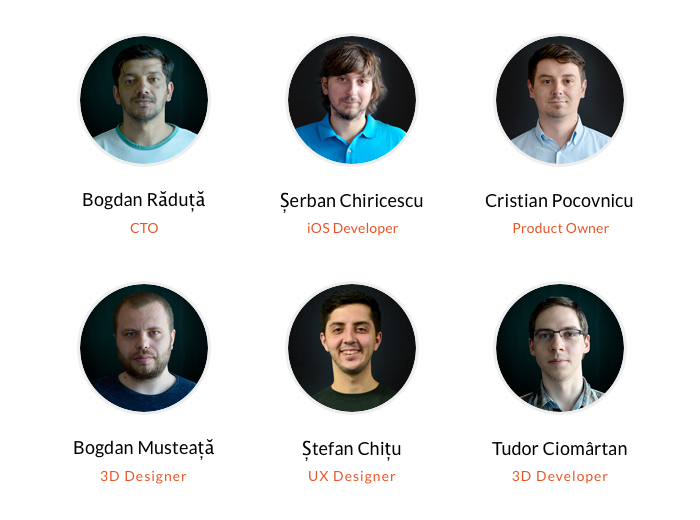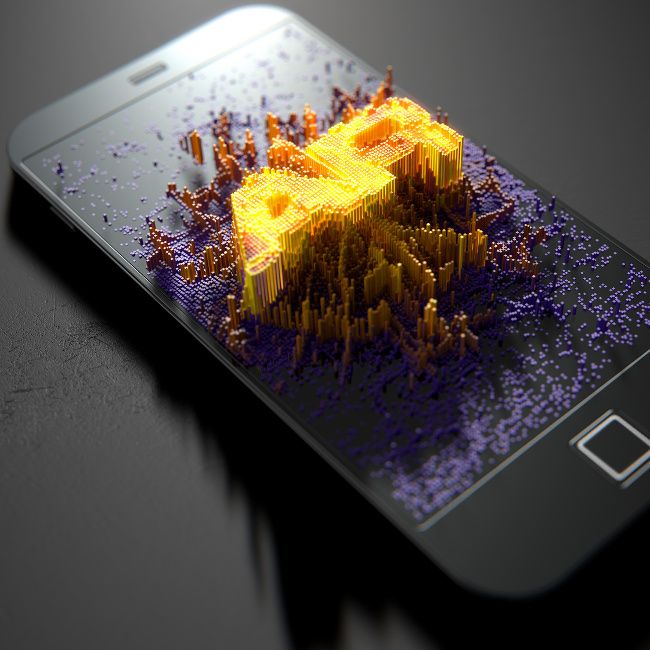The topic at the water cooler is dominated by Augmented Reality at the moment. But does it deserve to be the next big thing? From FaceTime props to Google Translate and Pokemon Go!, we adopted AR because it’s fun and easy to use, and defines the present and future of technology. The big question that arises is:
How can Augmented Reality have a meaningful impact?
We asked some of the guys in QUALITANCE who worked with VR and AR technologies how they see the shift to AR, and we give you the big picture. What you’ll find out from our colleagues?
- the fields where AR adds the most value
- the Google Glass controversy
- how AR could improve for a higher mass adoption
- & much more.

Augmented Reality opens a world of possibilities. Just imagine these scenarios – students could do practical experiences without leaving the classroom and without implying any danger; medicine newbies could have technical training in surgery.
This looks like a beautiful picture of the future. But regarding the very present, virtual and augmented technologies put limits to our everyday life rather than simplify it. The VR headsets cut off the user from their surroundings and blocks mobility; on the other hand, we regain mobility using AR apps, but we have to hold the phone continuously, which can become exhausting.
Is this real value? Does it make a meaningful impact on our lives? Is the AR hype worth it?
Let’s find out the actual state of Augmented Reality from our specialists.
Why would you choose to use AR?
 Bogdan: AR gives people more flexibility. It’s easy to use and affordable if you compare it to VR. A full VR kit costs around $3.000-4.000; instead, you have AR on your phone, within an app.
Bogdan: AR gives people more flexibility. It’s easy to use and affordable if you compare it to VR. A full VR kit costs around $3.000-4.000; instead, you have AR on your phone, within an app.
 Tudor: I can’t say “Here, use this app, it really helps you”. AR is not that evolved, so I need it. What we have right now is very static. It’s still AR, but it’s not what I think about when I imagine complex immersive AR experiences. But it will be great if AR could recognize buildings. I know that neural network algorithms that imply object recognition are developing more and more.
Tudor: I can’t say “Here, use this app, it really helps you”. AR is not that evolved, so I need it. What we have right now is very static. It’s still AR, but it’s not what I think about when I imagine complex immersive AR experiences. But it will be great if AR could recognize buildings. I know that neural network algorithms that imply object recognition are developing more and more.
 Cristi: AR started to have backing from great players like Apple, which means that all iOS developers will have the tools and interest to create AR experiences. The more the technology evolves and the stronger the computing power, the more AR content we’ll have.
Cristi: AR started to have backing from great players like Apple, which means that all iOS developers will have the tools and interest to create AR experiences. The more the technology evolves and the stronger the computing power, the more AR content we’ll have.
 Bogdan: AR makes lots of money, it’s trendy to talk about it, but as far as I’m concerned, I can live without it. There’s no AR app at the moment that blows my mind. Unless Hololens launches, when I might change my mind.
Bogdan: AR makes lots of money, it’s trendy to talk about it, but as far as I’m concerned, I can live without it. There’s no AR app at the moment that blows my mind. Unless Hololens launches, when I might change my mind.
Instead of talking about VR and AR separately, a new concept arises: mixed reality. And this is something reasonable to happen – once you have a headset, VR and AR can easily combine and give an overall experience. With merged reality, the way we live, work and consume media may fundamentally change, as the study shows.
Microsoft is walking in this direction. The promising new Hololens by Microsoft aims to bring a genuinely natural interaction in Augmented Reality. The device mixes realities and adds more complexity to holograms that blend in the real world. Here is a sneak peek of how it works:
Google Glass – yay or nay?

Cristi: Some say Google Glass is gone. It’s not gone at all. As we speak, people in manufacturing environments work using Google Glass. It’s a day-to-day tool – like we use our laptops. It has an excellent use case – having a digital display over the things you see with the naked eye, being provided with more info as you work – this is extraordinary.
 Bogdan: Their main problem is Google Glass makes you look like an elitist jerk. But I like the concept. I think the implementation could have been wiser, regarding privacy rules and mass adoption. On the other hand, Google Glass does its job very well in industries – for instance, Boeing uses them for building airplanes.
Bogdan: Their main problem is Google Glass makes you look like an elitist jerk. But I like the concept. I think the implementation could have been wiser, regarding privacy rules and mass adoption. On the other hand, Google Glass does its job very well in industries – for instance, Boeing uses them for building airplanes.
 Serban: The interesting part about Google Glass is the navigation service. It’s helpful when it comes to physical activities where your hands are busy, like riding or skiing. I don’t find AR glasses intrusive. We live in a society where we’re continuously filmed.
Serban: The interesting part about Google Glass is the navigation service. It’s helpful when it comes to physical activities where your hands are busy, like riding or skiing. I don’t find AR glasses intrusive. We live in a society where we’re continuously filmed.
If some end users might have forgotten of Google Glass, it gained popularity among businesses. Google Glass has been tested for the last two years by hundreds of employees at companies like GE, Boeing, DHL, and Volkswagen. The development team behind Google Glass is preparing the new Enterprise Edition, specially designed for factory workers.
Which are the fields where AR helps most?
 Bogdan: AR targets everybody because you can do many things on the move, comparatively to VR, where you need to sit on a chair, with a headset on. You can apply AR anywhere, from manufacturing to medicine. It gives mobility.
Bogdan: AR targets everybody because you can do many things on the move, comparatively to VR, where you need to sit on a chair, with a headset on. You can apply AR anywhere, from manufacturing to medicine. It gives mobility.
 Stefan: I would love if AR helped me discover things that I couldn’t access otherwise – walking the streets and seeing old buildings that no longer exist; entering a beerhouse and have a projection of how people worked there 100 years ago.
Stefan: I would love if AR helped me discover things that I couldn’t access otherwise – walking the streets and seeing old buildings that no longer exist; entering a beerhouse and have a projection of how people worked there 100 years ago.
If we look at medicine, the magic already happened. Dentistry has been upgraded to AR level. Dental AR is occurring right now, with realistic 3D visualization. You can see live simulations of your future teeth and choose how you want them. It also integrates 3D printing, so that the final result is identical to the AR representation.
Right now, I think entertainment covers more than 80% of the AR content on the market.
AR flaws at the moment.
 Serban: It’s hard to find an use case where AR is used for something more than entertainment. Right now, I think entertainment covers more than 80% of the AR content on the market.
Serban: It’s hard to find an use case where AR is used for something more than entertainment. Right now, I think entertainment covers more than 80% of the AR content on the market.
 Stefan: When you see a virtual object, you don’t take it seriously. If the AR element is not pixel perfect, you won’t be satisfied. This was our main challenge when we worked with AR products in QUALITANCE. Because of the inaccuracy of the 3D elements, people considered them just an entertainment tool. Until AR evolves technologically, it will stay in the entertainment area.
Stefan: When you see a virtual object, you don’t take it seriously. If the AR element is not pixel perfect, you won’t be satisfied. This was our main challenge when we worked with AR products in QUALITANCE. Because of the inaccuracy of the 3D elements, people considered them just an entertainment tool. Until AR evolves technologically, it will stay in the entertainment area.

Bogdan: If we talk about AR mobile games, I think a truly AR experience is impossible to be lived with a phone. I’m a passionate gamer. I need a 360-view, I want to be immersed. If Hololens is as promising as it sounds, well, yeah, AR will become the next amazing thing.
Augmented Reality games bring new challenges in the real world. You fight aliens, capture fantastical creatures, or defend kingdoms right in your neighborhood. Gaming conquers the world, but AR evolves beyond gaming and phones.
Augmented Reality is here to make life simpler, and it proves that already. If you want to measure something, you don’t need to put the house upside down in search of a ruler. You have AR Measure Kit on your phone and you can find out the dimensions of everything – walls, furniture, or someone’s height. Also, people can start their house redecoration using IKEA Place or Amikasa. For the incurable romantics, many tools offer them the full picture of constellations all night long – Sky Guide AR is one of them.
When we will get AR out of the phone & tablets and we will put it on another support, this is when this technology will flourish and people will adopt it more and more.
Cristi Pocovnicu, Product Owner
When thinking of the Augmented Reality of the future, people want high-quality entertainment, impactful usefulness and complete mobility all at the same time. This also means an effortless transition between virtual and physical worlds, which might lead to the situation when users couldn’t know if they are in the virtual or physical world.
How does AR integrate into your everyday life?
 Cristi: AR helped me a lot during my trip to Russia. When it came to food menus, I couldn’t understand one word. The Google Translate app translated everything for me, in English, right on the spot.
Cristi: AR helped me a lot during my trip to Russia. When it came to food menus, I couldn’t understand one word. The Google Translate app translated everything for me, in English, right on the spot.
The truth is, Google Translate improved massively in the last years. In 2015, they added 20 more languages to the app, making it even easier to use and more accessible than before.
 Bogdan: I have Augmented Reality on my car. It has a barcode on the door and, in case of an accident, the emergency people scan that code with an AR app and know where they should break the fuel line to avoid any danger.
Bogdan: I have Augmented Reality on my car. It has a barcode on the door and, in case of an accident, the emergency people scan that code with an AR app and know where they should break the fuel line to avoid any danger.
To sum it up
We’re all waiting for a smooth and natural AR experience, that allows us to shift from an internet of information to an internet of “realities”. The virtual world has the potential to become the social network of the future.
The ways to get there
- The future of AR is not on the phone. We love devices that give mobility.
- For an enjoyable and credible AR experience, the virtual elements must perfectly fit in the context.
- AR needs to become more and more visible in other areas than entertainment.
Want to keep up with the news? Read more on our blog or follow us on YouTube, Facebook or Instagram accounts if you want to learn more cool tech stuff.



Emerging technologies that will expand your future horizons - QUALITANCE
Posted at 13:30h, 14 July[…] AR has proven much easier to implement than VR, and 2018 saw several high-profile AR executions. From David Bowie costumes to hurricanes. […]